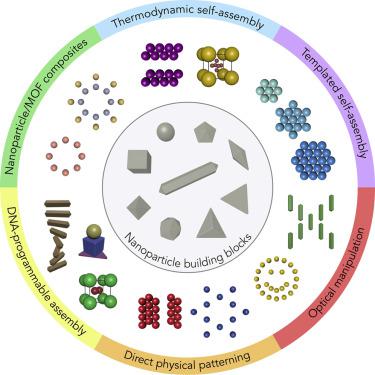Chem ( IF 19.1 ) Pub Date : 2018-08-02 , DOI: 10.1016/j.chempr.2018.07.009 Paul Z. Chen , Lori Pollit , Lyndon Jones , Frank X. Gu

|
Recent methodological advances have led to unprecedented precision in the immobilization of metal nanoparticles. These methodologies come from a broad range of disciplines and organize nanoparticle building blocks into a diverse selection of distinct architectures—from small arrays to ordered superstructures. Because properties can be dictated by assembly, architectures can present enhanced properties of the constituent nanoparticles or generate emergent properties of the collective architecture that are unavailable to their constituent nanoparticles. Functional architectures use these properties to further tailor and optimize performance in myriad applications. This review discusses the methodological advances that enable the immobilization of metal nanoparticles in distinct two- and three-dimensional architectures. Discussion will include their distinctions, properties associated with the assemblies and their applications, and the key challenges and future directions in this growing field.
中文翻译:

固定化金属纳米粒子的功能性二维和三维体系结构
最近的方法学进展已导致金属纳米颗粒固定化方面空前的精确性。这些方法学来自广泛的学科,并且将纳米粒子构建块组织成各种不同的体系结构选择-从小阵列到有序的上层建筑。因为性质可以由组装决定,所以体系结构可以表现出组成纳米颗粒的增强的性能或生成其组成纳米颗粒无法获得的集体体系的新兴特性。功能体系结构使用这些属性来进一步定制和优化各种应用程序中的性能。这篇综述讨论了使金属纳米颗粒固定在不同的二维和三维结构中的方法学进展。











































 京公网安备 11010802027423号
京公网安备 11010802027423号